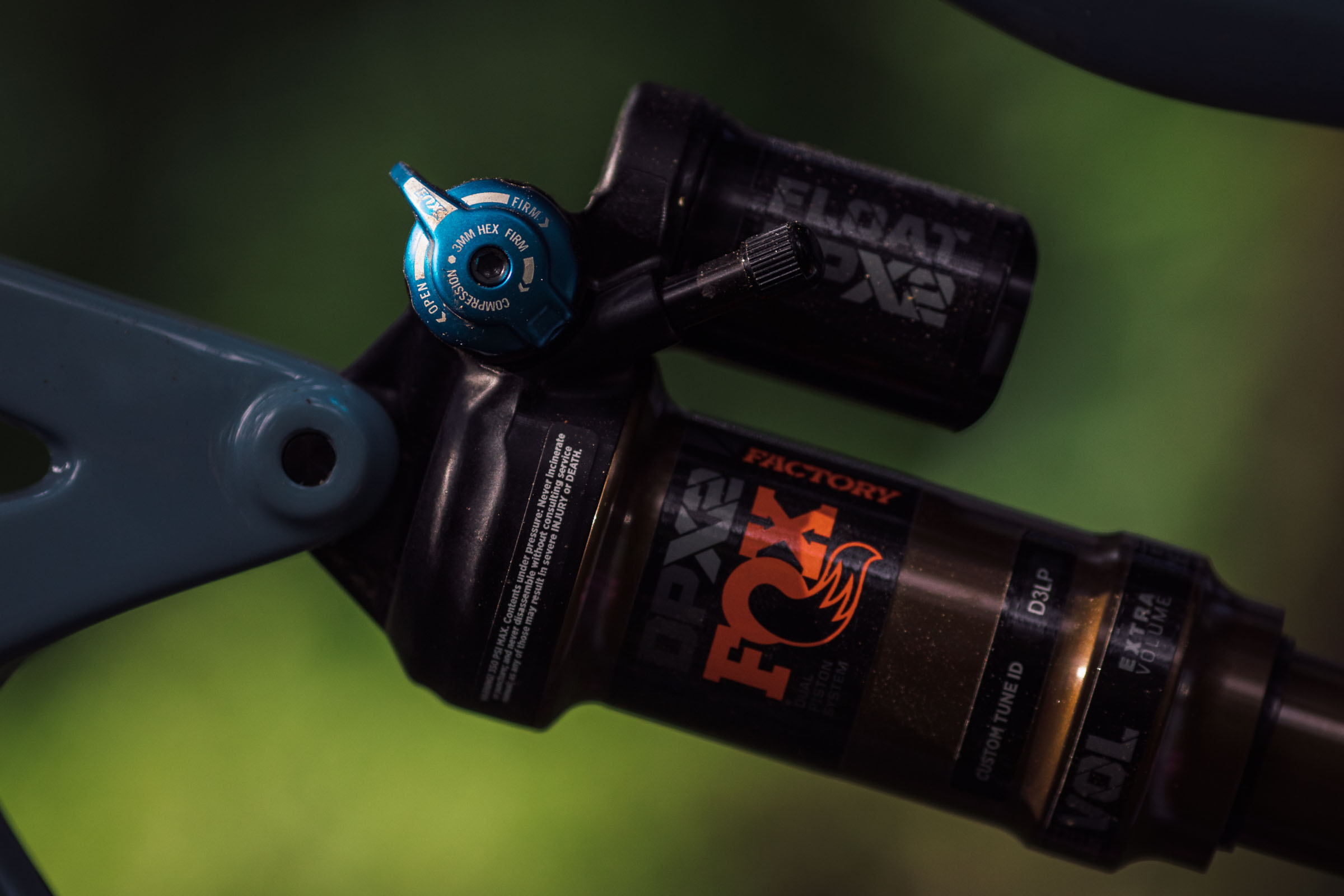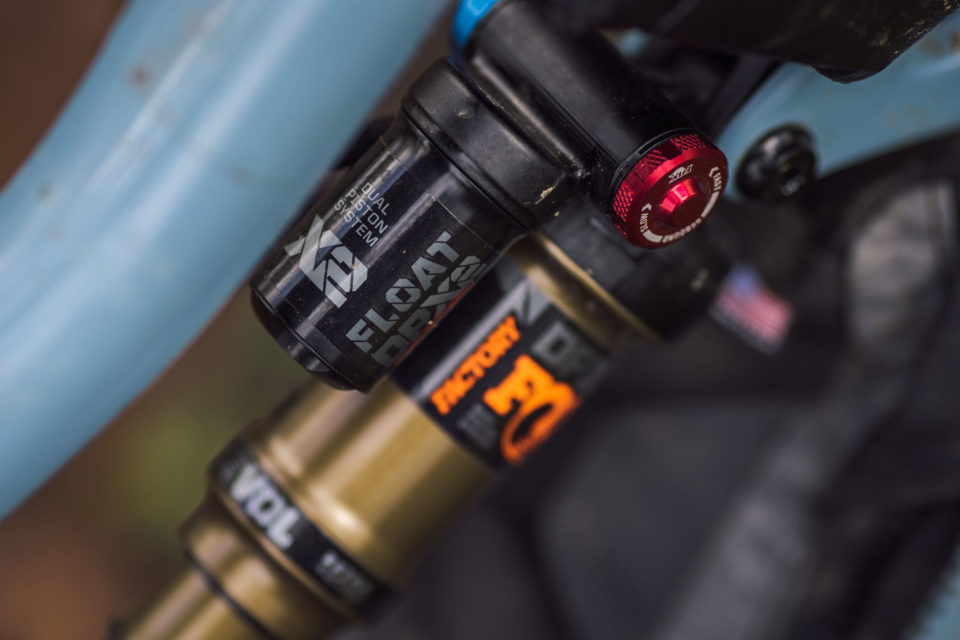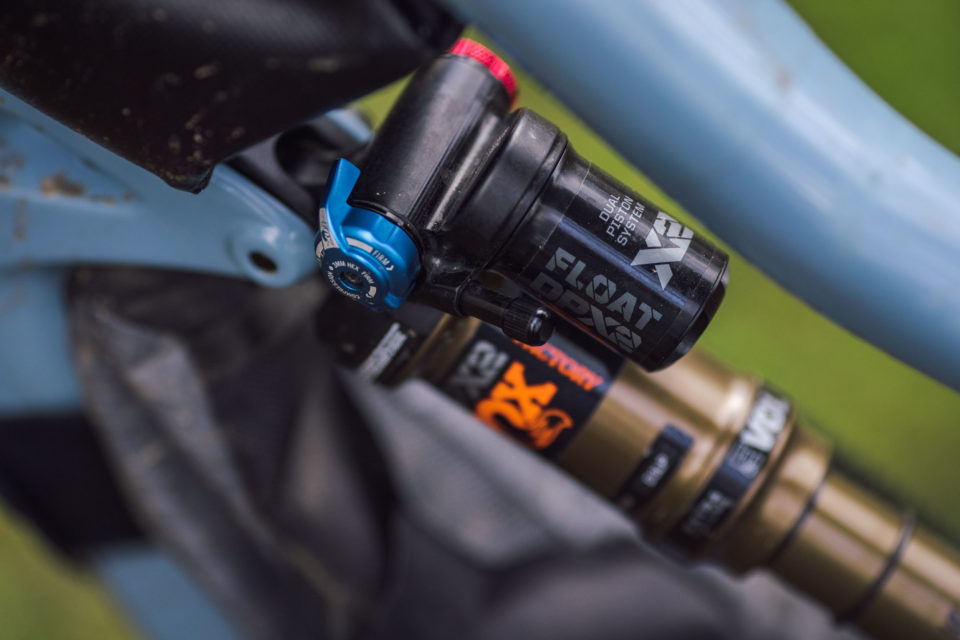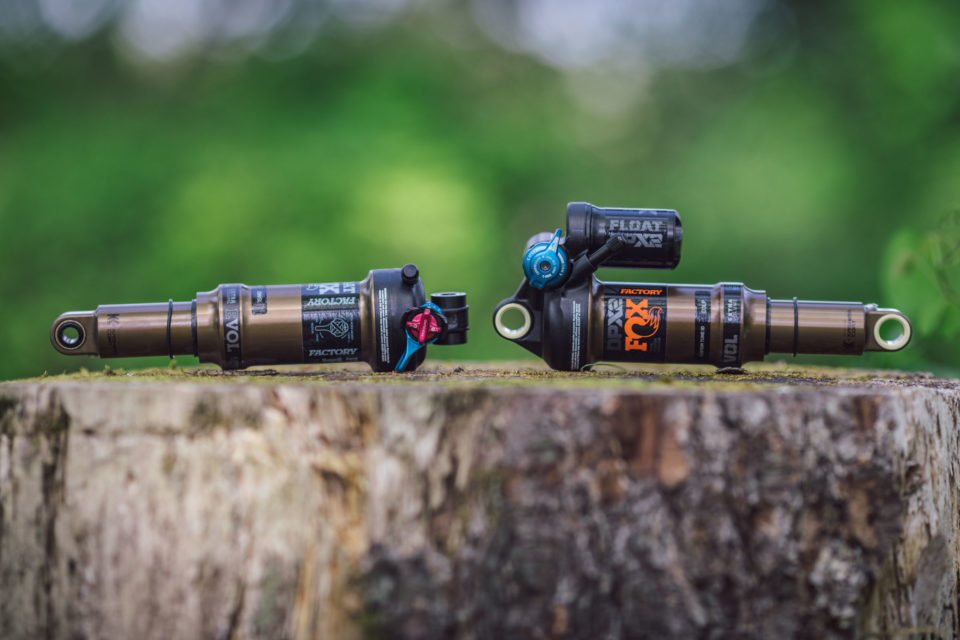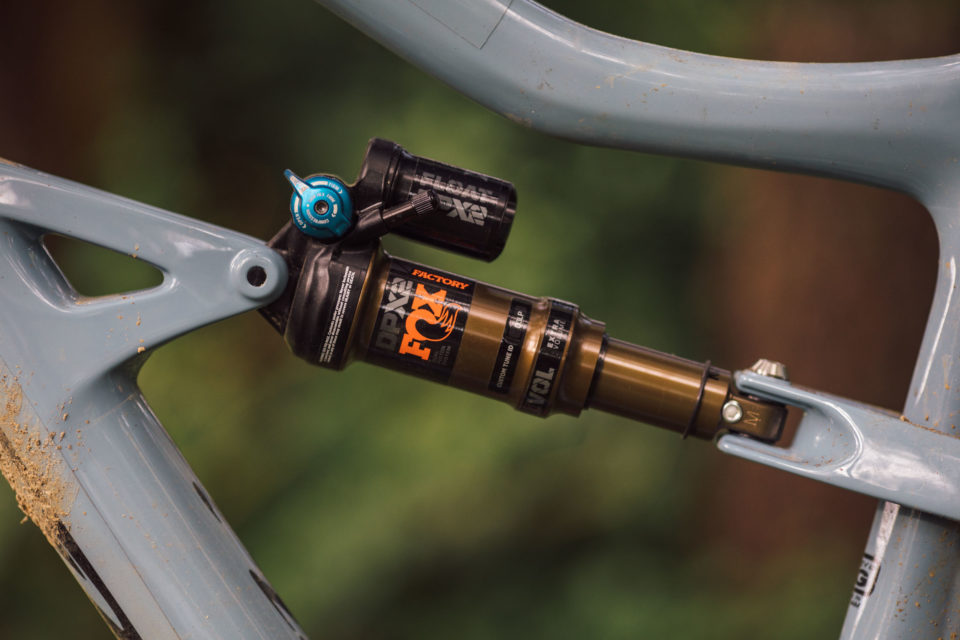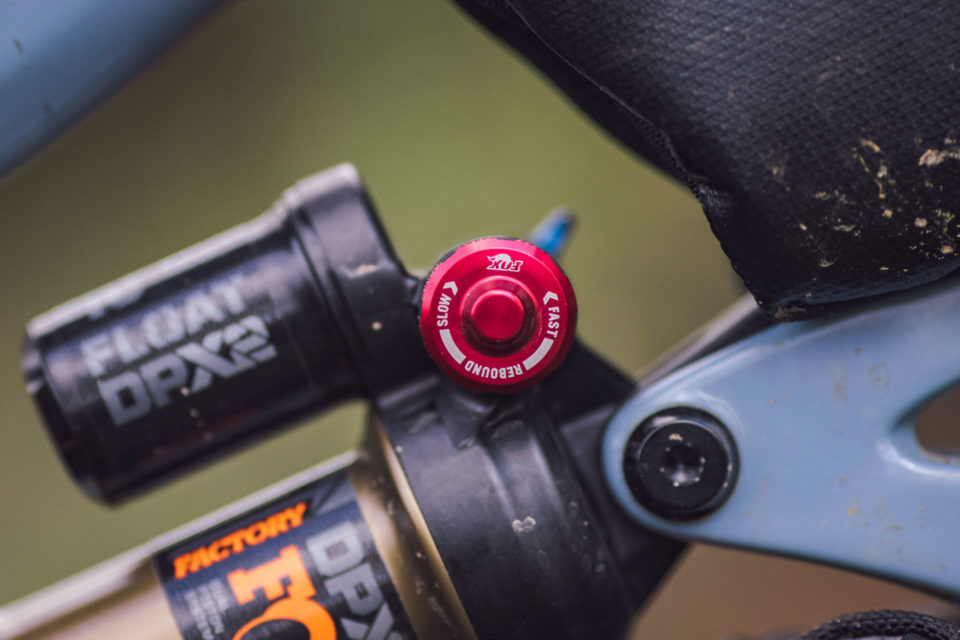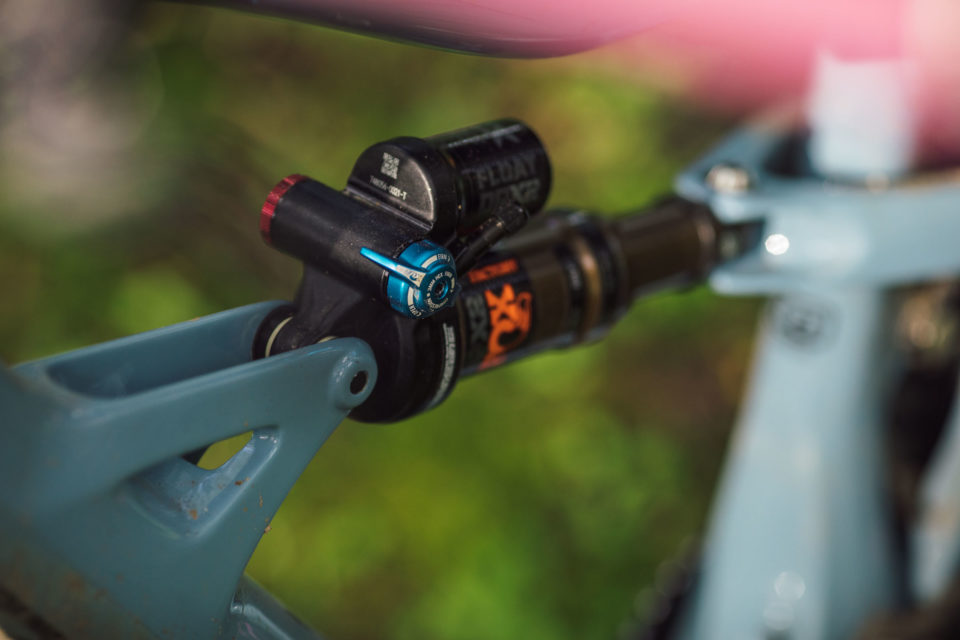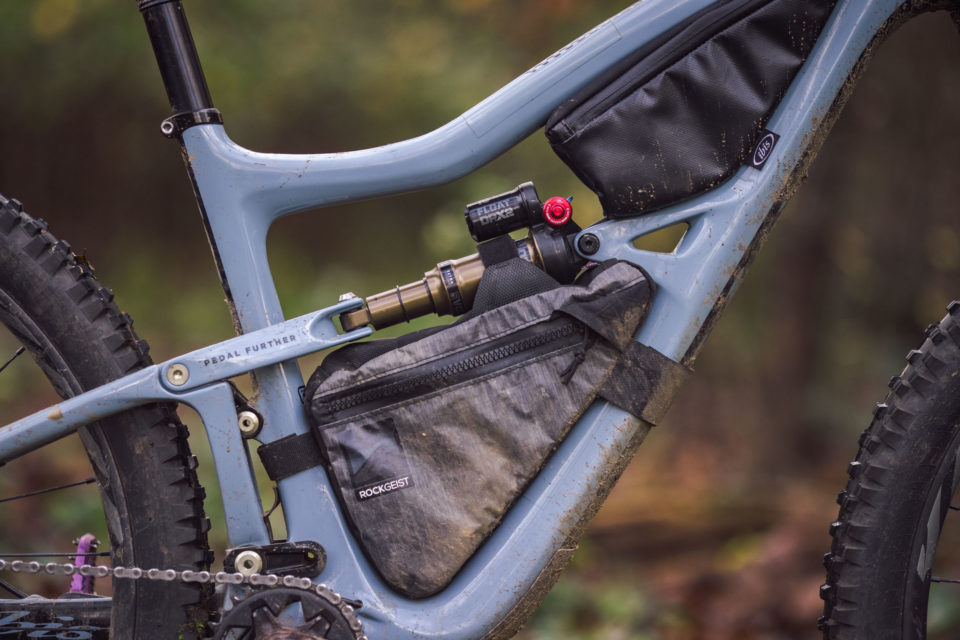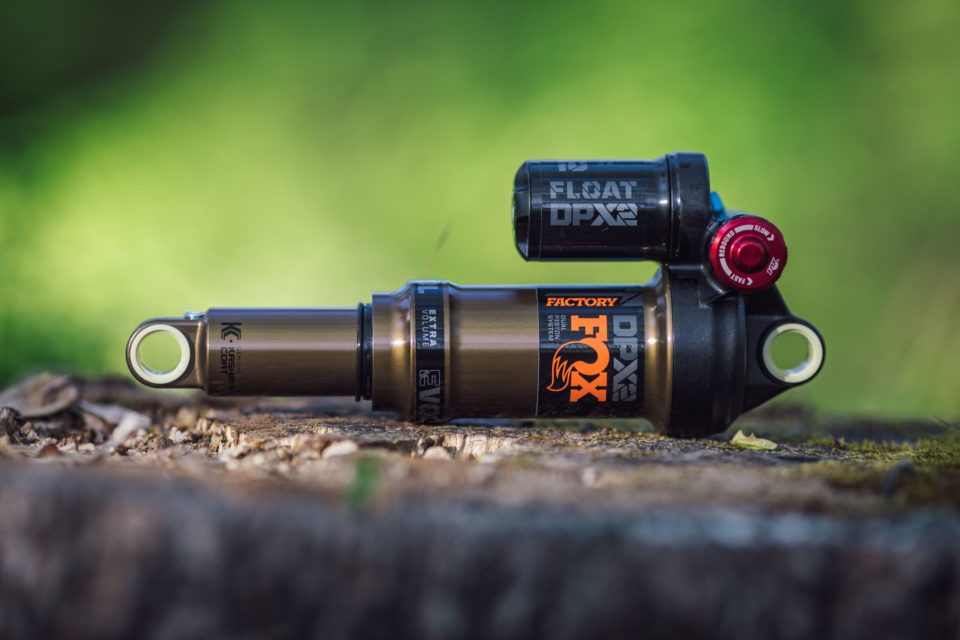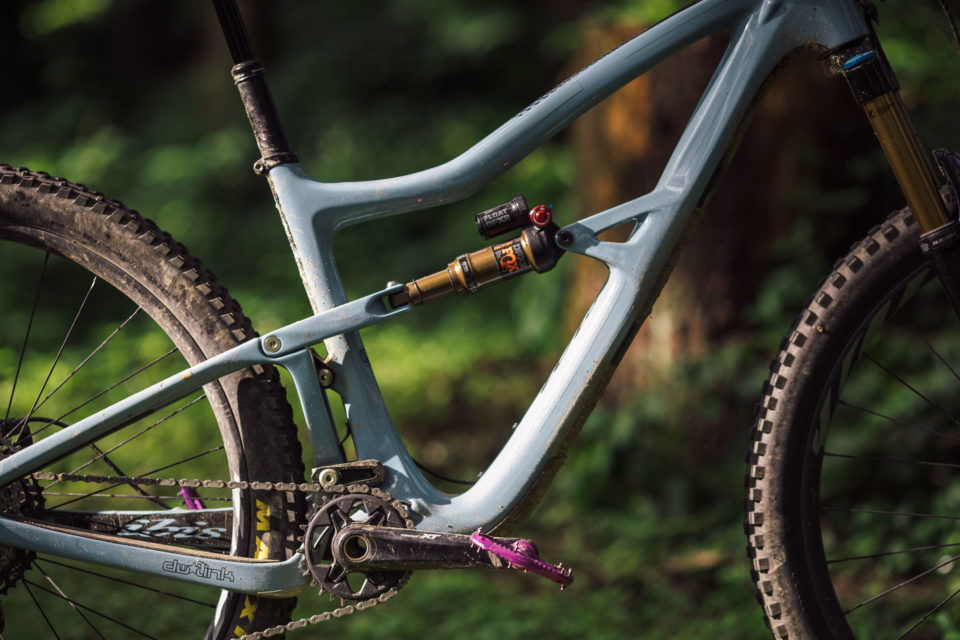Fox DPS vs DPX2: What’s with the reservoir?
Share This
Ever wonder what the piggyback reservoir does on a high-performance shock? Logan did, so he recently swapped out the stock Fox DPS shock on his Ibis Ripley for a new Fox DPX2 to find out. He reports back on the ride quality and the differences between the two here…
I live in a small mountain bike town that’s home to some of the more infamously aggressive trails in the Appalachians. Riders can often be overheard in our local shops discussing coil shocks, air tokens, low-speed compression settings, and other such suspension mumbo jumbo. Admittedly, this isn’t (or formerly wasn’t) really my cup of tea. Until just a few years ago, I was a bit of an outcast and could often be found riding a rigid 29+ bike on these same trails. With all that said, I was a little slow to delve into all the under-the-hood shock and fork tech. However, I like riding technical singletrack and going relatively fast, and nowadays I don’t like punishing my aging lower back, so I’ve somewhat embraced the full-squish experience.
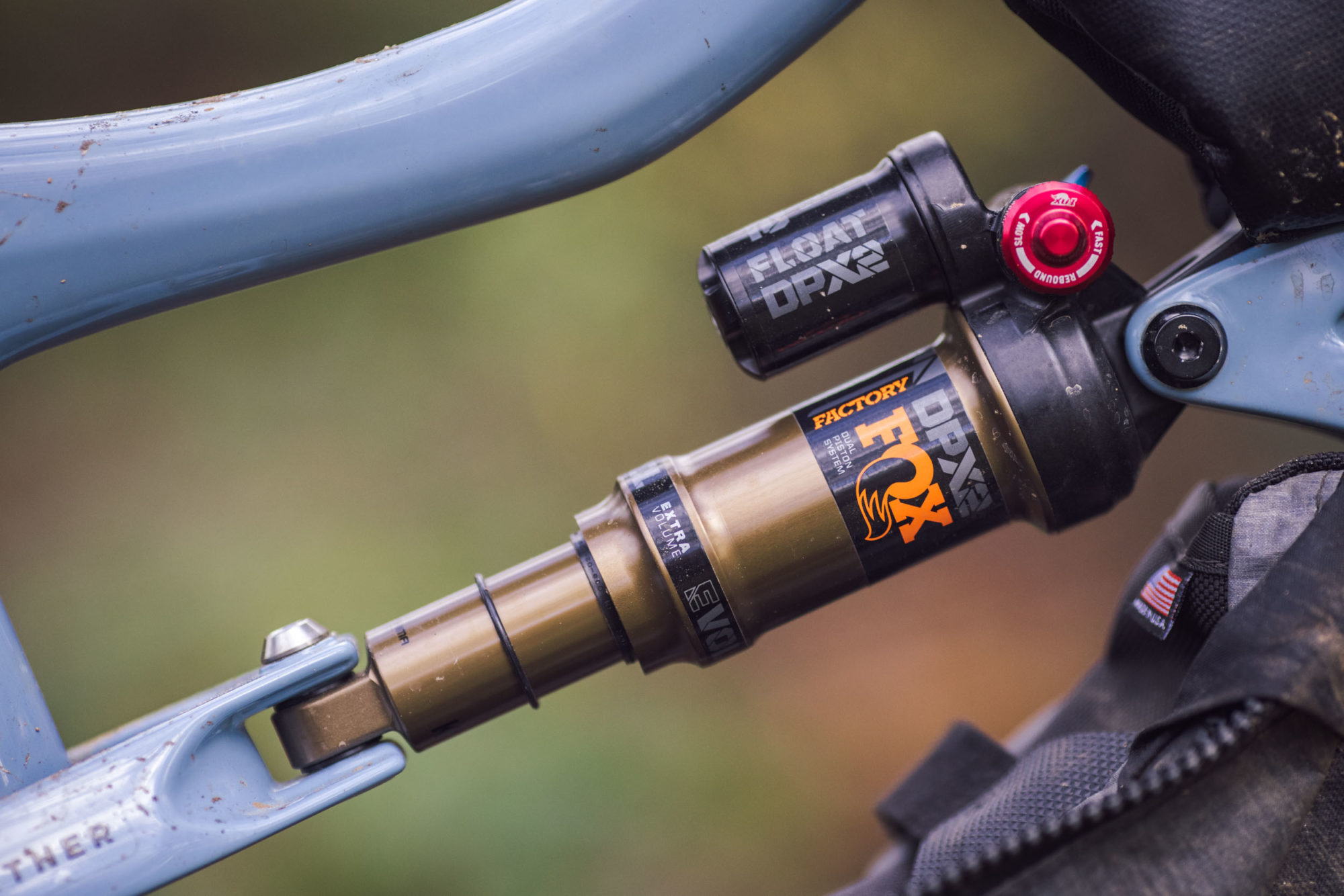
After spending a couple of years trying out a lot of short-travel 29ers—all the while pondering suspension kinematics and other such plush-bike absurdities—I decided to buy the Ibis Ripley, one of my favorite off-the-shelf bikes that I tried. It was only a matter of time before someone told me I should consider upgrading the rear shock. As it happens, I had the opportunity to try Fox’s new DPX2 after using the stock DPS shock on the same bike. I honestly hadn’t really given much thought to shock reservoirs in the past. In fact, I used to fundamentally poo-poo the idea based on that pill-bottle-esque extrusion eating up valuable frame bag space. However, all it took was one ride on the new Fox DPX2 shock and I was sold.
The DPX2 was initially released about three years ago as a hybrid of the X2, a downhill air shock, and the lightweight, XC-oriented DPS, which is one of the standards used on many trail bikes. In essence, the DPX2 is designed to offer more performance (particularly small bump sensitivity, mid-stroke support, and performance duration while descending) than the DPS in a lighter weight package than the X2.
The 2021 DPX2 (which is what I have and what is reviewed here) got a few modifications since the original was released in 2018. This mostly comes in the form of an updated base valve. Like its predecessor, it still has 10 clicks of low-speed compression that allow you to fine-tune the feel of the shock when it’s in open mode. Prices range from $559 to $579 USD.
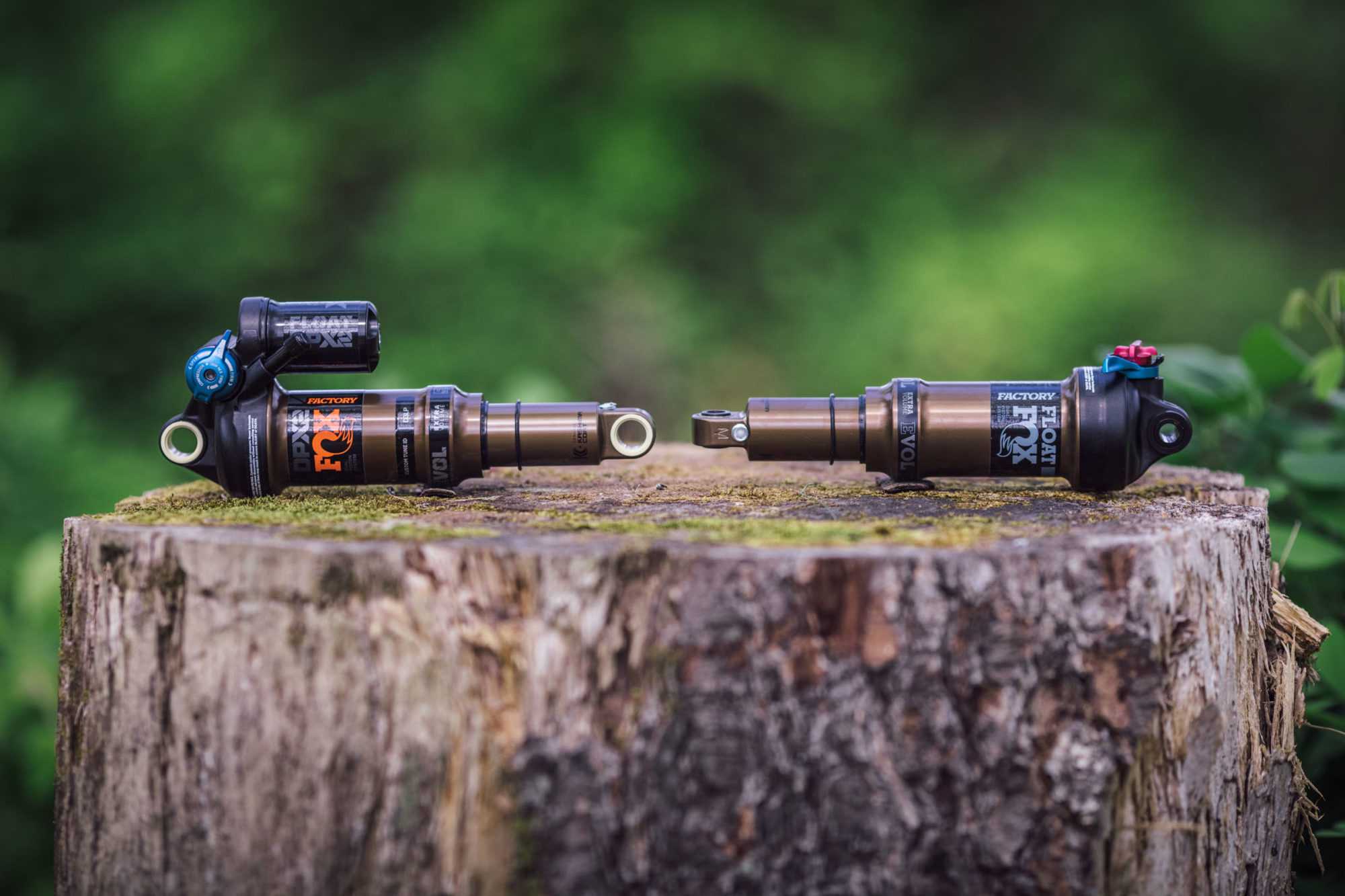
Fox DPS vs. DPX2
What exactly does that extra reservoir do? Let’s first outline how the simpler DPS shock works without the reservoir (without going into too much detail). As the shock compresses, the oil in the DPS shock travels back and forth along a similar path, through the same single-piston circuits. In a dual-chamber system, such as the DPX2, the additional floating piston reservoir allows more oil to be used in the same system, and the separate Base Valve—that knobby end with the dials—allows the oil to recirculate. You can dig into the oil flow outline below to really nerd out, but in a nutshell, the greater volume of oil requires less internal pressure, thus improving the shock’s small bump sensitivity. This also means it heats up less as it works hard on longer descents or bumpier trails. When using the smaller DPS, it can overheat on long descents, thus inhibiting its performance.
Compression Oil Flow
Fox put together the following outline to illustrate the flow of oil when the shock is compressed:
- During the compression phase, oil flows in two parallel circuits: (A) Through the compression ports and valve stack on the main piston; (B) Through the Inner Damper Shaft to the Eyelet
- From the Inner Damper Shaft, oil flows through the Compression Port in the eyelet to the Base Valve
- A selector plate on the Base Valve routes fluid to the appropriate damping circuit based on the rider’s selection of Open, Middle, and Firm modes. Open mode is shown, which is itself adjustable by the rider. (A) Oil recirculates via the flow-checked refill circuits to the Rebound Port in the eyelet; (B) Shaft displaced oil travels to the reservoir.
- Recirculated oil travels through the Rebound Port in the eyelet to the annular region between the inner and outer damper shafts.
- Recirculated oil flows between the inner and outer damper shafts to the damper body.
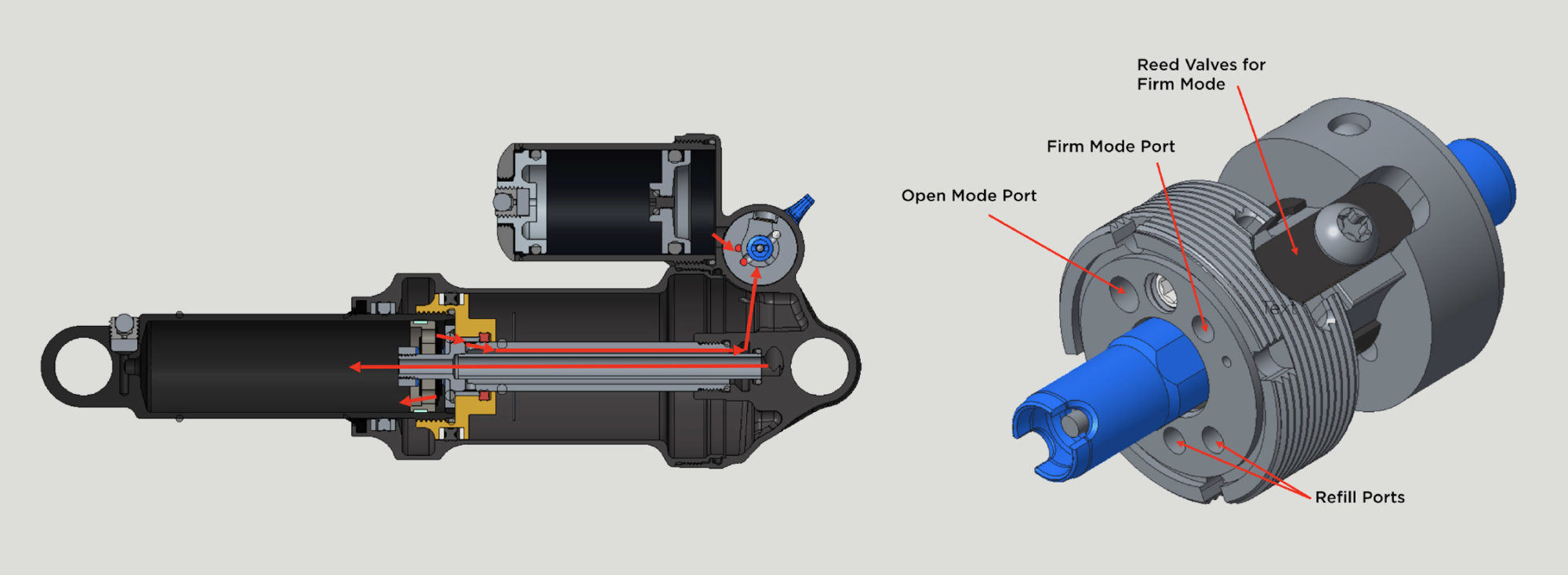
Rebound Oil Flow
Fox put together the following outline to illustrate the flow of oil when the shock is in rebound:
- During the rebound phase, oil flows in two parallel circuits: (A) Through the rebound ports and valve stack on the main piston; (B) Through the annular region between the Inner Damper Shaft and the Outer Damper Shaft to the Eyelet
- Oil flows through the Rebound Port in the eyelet to the Base Valve
- A selector plate on the Base Valve routes fluid to the appropriate damping circuit based on the rider’s selection of Open, Middle, and Firm modes. Rebound is adjustable by the rider. Oil recirculates via the flow-checked refill circuits to the Compression Port in the eyelet. Shaft displaced oil returns from the reservoir via flow-checked refill circuits to the Compression Port in the eyelet.
- Recirculated oil and Reservoir oil travel through the Compression Port in the eyelet to the Inner Damper Shaft.
- Recirculated oil and Reservoir oil flow in the Inner Damper Shaft to the damper body.
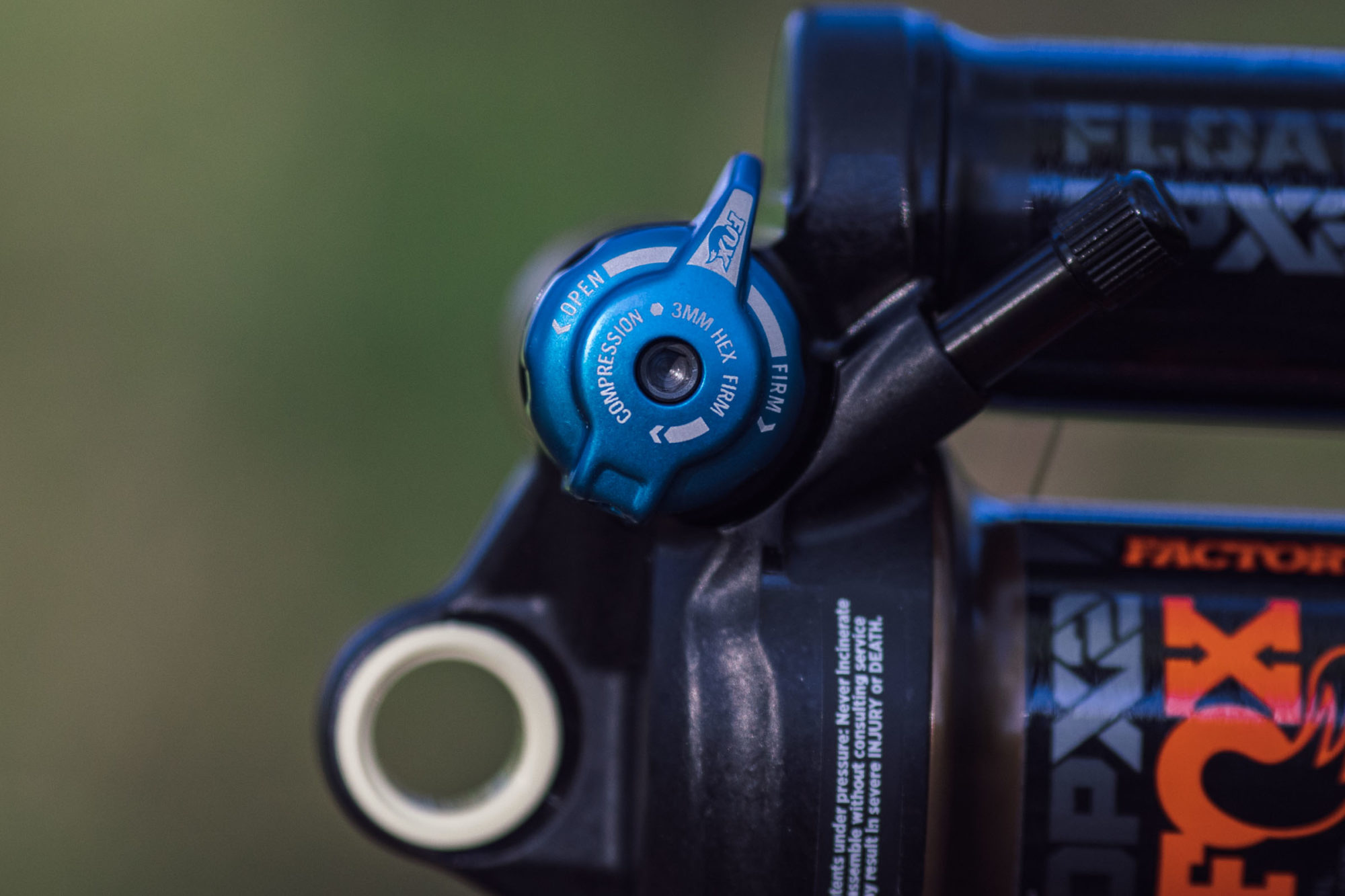
The recirculating damper design also allows more granular adjustability and control. The Base Valve has a three-position lever with settings for Open, Medium, and Firm. The Firm isn’t a true lockout, but it’s close. Open Mode offers 10 clicks to fine-tune the compression using a 3mm hex key. There is also a rebound damper adjustment dial with 14 clicks between Fast and Slow. You can also add change volume spacers in the shock to change the amount of mid-stroke and bottom out resistance.
Setting up the DPX2 can be a little daunting considering all these variables. To start, Fox offers a setup guide linked from the product page, and trail ninja Jeff Kendall-Weed goes through the process on two bikes here. I set the sag to 11mm (per Ibis’ spec) and after trying it out a few times, ended up settling with three clicks of low-speed compression (from wide open). Per the setup sheet, I added seven clicks on the rebound damping dial (from fastest/open) based on the 220 PSI pressure used to achieve the correct sag. I really haven’t messed with these settings much since. Also, I always leave it set to Open. The Ripley climbs really well, and the DPX2 perfectly compliments it, even when in the open position.

On the trail, there were two things I noticed out of the gate. One was that the DPX2 buffered small roots and rock chatter much better than the DPS. It felt less bouncy as a result and generally more comfortable when just pedaling along on rooty and rocky surfaces. I also felt like it gave the bike a superior stick-to-the-trail feel when cornering and descending on rougher trails. More surprisingly, that effect translated to climbing on rooty and steep sections. There are a few little technical climb moves on a couple of local trails that can be a little tricky for me. The traction going up with the DPX2 changed that game. Lastly, descents simply felt better. It almost seemed as if I added a few millimeters to the bike’s travel, overall.
- Actual Weight: 413 grams
- Place of Manufacture: Taiwan
- Price: $579 USD
- Manufacturer’s Details: RideFox.com
Pros
- Far superior small bump sensitivity
- Better traction and control in corners and surprisingly, while climbing
- Better performance on long descents
Cons
- Heavier. The DPX2 is 133 grams heavier than the DPS
- Piggyback reservoir can encumber space for a frame bag
- Expensive
Wrap Up
For all those rigid steel-is-real folks in our audience, much like my(former)self, you may have already dozed off, or just not clicked the link. There’s a lot to digest with components in the full-suspension bike market. It’s not too dissimilar to the motocross world, with technological advancements, kinematic terminology, and fairly complex parts that require maintenance and tuning. That said, anyone who’s made it this far in the review will likely appreciate the benefits that come from this shock. Without overly complicating the conversation, when comparing the DPX2 to the DPS that was on the bike previously, I immediately noticed an increase in plushness and small-bump sensitivity. Yet that came with zero detriments to how the bike pedaled or climbed. In fact, the increased support in the middle of the shock’s travel translated to a noticeable improvement in traction while both cornering and climbing. It’s not a cheap upgrade, and there are negatives, but if you’re looking for a significant performance boost on your short-travel 29er, trail bike, or AZT/CT-ready bikepacking rig, it might just be worth it.
Please keep the conversation civil, constructive, and inclusive, or your comment will be removed.






